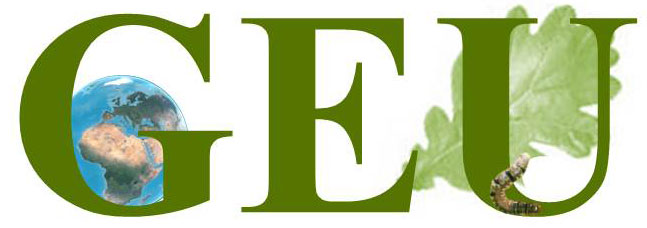The expansion of farmlands to meet the growing food demand of the world’s ever expanding population places a heavy burden on natural ecosystems. A new IIASA study however shows that about half the land currently needed to grow food crops could be spared if attainable crop yields were achieved globally and crops were grown where they are most productive.
The land sparing debate, which was sparked around 2005 by conservation biologists, recognized that there is usually a limit to the extent to which farmland can be made ‘wildlife friendly’ without compromising yields, while most threatened species only profit from the sparing or restoration of their natural habitats. Interest in this topic recently gained new momentum through the Half Earth project, which aims to return half the area of land currently being used for other purposes to natural land cover to restrict biodiversity loss and address other impacts of land use such as greenhouse gas emissions.
According to the authors of the study published in Nature Sustainability, the need for this type of strategy is urgent, given the increasing global demand for agricultural products. The study is the first to provide insight into the amount of cropland that would be required to fulfill present crop demands at high land use efficiency without exacerbating major agricultural impacts globally.
“The main questions we wanted to address were how much cropland could be spared if attainable crop yields were achieved globally and crops were grown where they are most productive. In addition, we wanted to determine what the implications would be for other factors related to the agricultural sector, including fertilizer and irrigation water requirements, greenhouse gas emissions, carbon sequestration potential, and wildlife habitat available for threatened species,” explains study lead author Christian Folberth, a researcher in the IIASA Ecosystems Services and Management Program.
The study results indicate that with high nutrient inputs and reallocation of crops on present cropland, only about half the present cropland would be required to produce the same amounts of major crops. The other half could then in principle be used to restore natural habitats or other landscape elements. The findings also show that land use is currently somewhat inefficient and not primarily due to the upper limits to crop yields as determined by climate in many parts of the world, rather, it is strongly subject to management decisions.
It is difficult to say exactly how much biodiversity is impacted as a direct result of agricultural activities, but it is estimated to exceed safe boundaries, primarily due to habitat loss. In this regard, the researchers evaluated two scenarios: the first proposes maximum land sparing without constraints, except for the present cropland extent, while the second scenario puts forward targeted land sparing that abandons cropland in biodiversity hotspots and uniformly releases 20% of cropland globally. There were only marginal differences between the two scenarios in most aspects, except for wildlife habitat, which only increased significantly with targeted land sparing. This however still enabled reducing the cropland requirement by almost 40%.
Furthermore, “we found that greenhouse gas emissions and irrigation water requirements are likely to decrease with a reduced area of cultivated land, while global fertilizer input requirements would remain unchanged. Spared cropland could also provide space for substantial carbon sequestration in restored natural vegetation. Yet, potentially adverse local impacts of intensive farming and land sparing such as nutrient pollution or loss of income in rural areas will need to be studied further” says Prof. Josep Penuelas from CREAF-CSIC Barcelona, co-author of the study and ERC-Synergy project co-lead.
“The results of our study can help policymakers and the wider public to benchmark results of integrated land use scenarios. It also shows that cropland expansion is not inevitable and that there is significant potential for improving present land use efficiency. If the right policies are implemented, measures such as improved production technologies can be just as effective as demand-side measures like dietary changes,” says project co-lead and former IIASA Ecosystems Services and Management Program Director Michael Obersteiner. “However, in all cases such a process would need to be steered by policies to avoid unwanted outcomes.”
Reference
Folberth C, Khabarov N, Balkovič J, Skalský R, Visconti P, Ciais P, Janssens I, Peñuelas J, Obersteiner M (2020). The global cropland sparing potential of high-yield farming. Nature Sustainability DOI: 10.1038/s41893-020-0505-x
Contacts:
Researcher contact
Christian Folberth
Research Scholar
Ecosystems Services and Management Program
Tel: +43 2236 807 451
Press Officer
Ansa Heyl
IIASA Press Office
Tel: +43 2236 807 574
Mob: +43 676 83 807 574
About IIASA:
